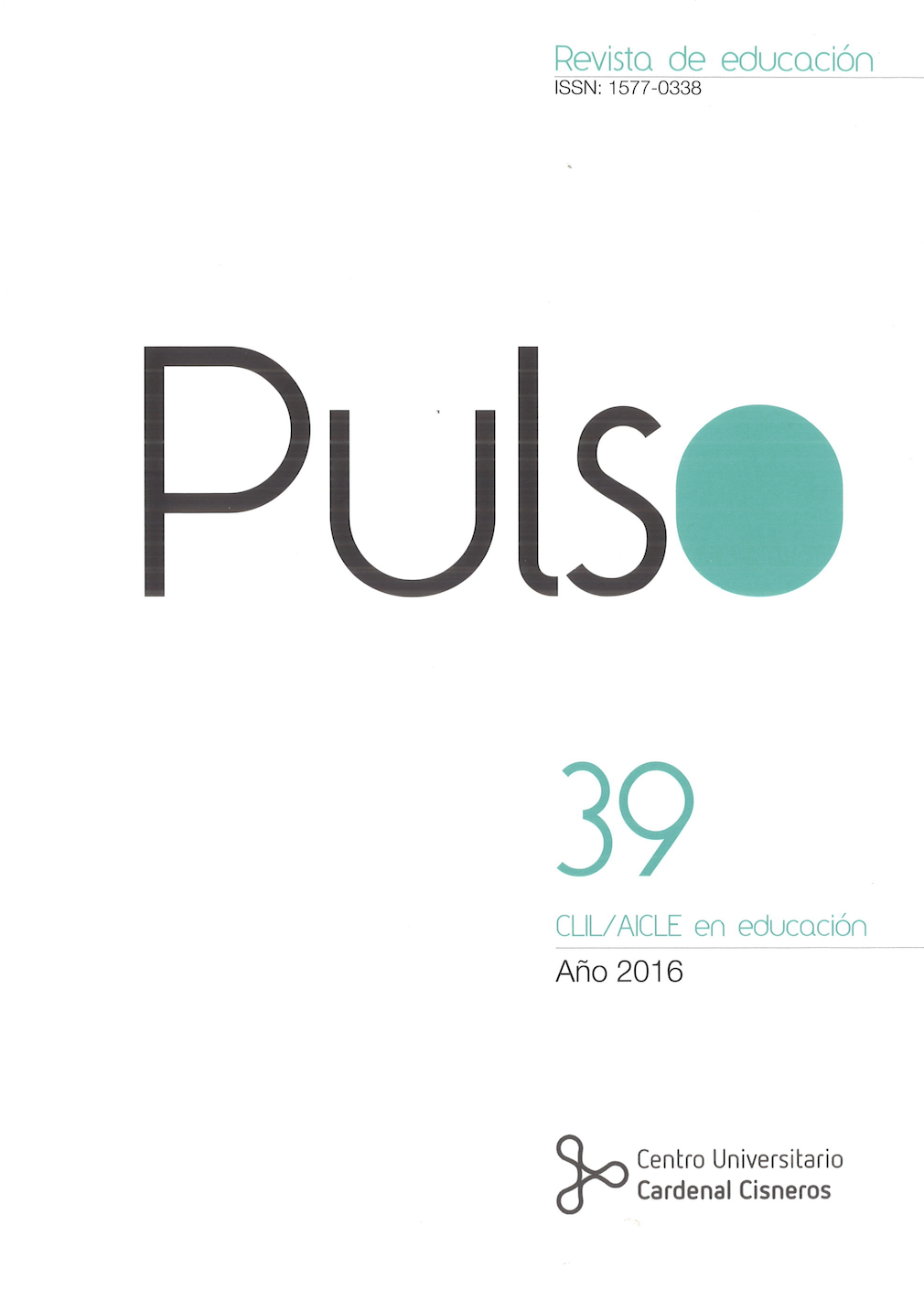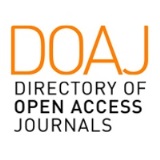Learning History and English through Drama and the CLIL Approach
DOI:
https://doi.org/10.58265/pulso.5080Palabras clave:
historia, AICLE, teatro, bilingüe, revolución industrial., Historia, AICLE, Teatro, Bilingüe, Revolución IndustrialResumen
Este estudio investiga si el aprendizaje de contenidos históricos mediante un enfoque innovador puede mostrar mejores resultados que los métodos de enseñanza tradicionales. En este estudio, la investigadora ha tratado de transmitir las diferencias en el aprendizaje del tema ‘La revolución industrial’ utilizando una metodología tradicional basada en el libro de texto, frente a una metodología más activa que incluye el teatro y la música. El centro del estudio son dos grupos de alumnos de Sección Bilingüe en inglés que estudiaron el tema durante el primer trimestre del curso 2010-2011. Se obtuvieron los resultados de los alumnos mediante una prueba de verdadero / falso para determinar el efecto de las pruebas de implementación anterior y posterior al estudio. Todos los datos fueron recogidos y analizados con una metodología cuantitativa. La hipótesis inicial de la investigadora fue que no habría una sustancial diferencia entre las dos metodologías. De acuerdo con los resultados de este estudio se rechaza la hipótesis inicial y se sugiere que, para ciertos temas, la enseñanza de la historia utilizando el teatro y la música puede ser más eficaz que la metodología basada exclusivamente en el libro de texto. Este estudio es parte de una investigación en curso en este campo para un análisis estadístico fiable.
Descargas
Citas
British Library (2016). Discovering Literature: Romantics and Victorians. Oliver Twist and the workhouse. Retrieved from https://www.bl.uk/romantics-and-victorians/articles/oliver-twist-and-the-workhouse
Dafouz, E. & Guerrini, M.C. (eds) (2009). CLIL across Educational Levels. Handbook for Teachers. Madrid: Richmond Publishing.
Dalton-Puffer, Ch. (2013). A construct of cognitive discourse functions for conceptualizing content-language integration in CLIL and multilingual education. EuJAL 1(2), 216–253 DOI: 10.1515/eujal-2013-0011
Dickens, Ch. (2008). Oliver Twist. London: Puffin Classics.
Dobson, A, Pérez Murillo, M.D. & Johnstone, R. (2010). Bilingual Education Project Spain. Evaluation Report. Madrid: Ministerio de Educación.
D’Sa, B (2005). Social Studies in the Dark: Using Docudramas to Teach History. The Social Studies,96(1), 9-13.
Eleanitz Project (2010). History 4. Compulsory Secondary Education. Second Cycle. Donostia: Ikastolen Elkartea.
Fernández, M., García, C. & Del Pozo, E. (2009). “Teaching History through English: the Norman Conquest” in Dafouz, E. and Guerrini, M.C. (eds) CLIL across Educational Levels. Handbook for Teachers, 9-98. Madrid: Richmond Publishing.
Galbi, D.A. (1997). Child Labor and the Division of Labor in the Early English Cotton Mills. Journal of Population Economics, 10, 357-375.
Hartwell, R.M. (1981). Taxation in England during the Industrial Revolution. Cato Journal, 1 (1), 129-153.
Hubbard, R.S. & Power, B.M. (2003). The Art of Classroom Inquiry: A Handbook for Teacher-Researchers Santa Barbara, CA: Greenwood Press.
Izquierdo Gomez, D. (2010). Using drama to improve oral skills in ESL classroom, International Schools Journal, 30(1), 29-35.
Llinares, A. (2015). Integration in CLIL: a proposal to inform research and successful pedagogy. Language, Culture and Curriculum 28(1), 58-73. DOI: 10.1080/07908318.2014.1000925
Llinares, A., Morton, T. & Whittaker, R. (2012). The roles of language in CLIL. Cambridge: Cambridge University Press.
Markovic Plestovic, A. (2010). Place, statistics, semiotics and values as a basis for sustainable social planning – an experiment. Technics Technologies Education Management, 5 (2), 342-353.
O’Gara, P. (2008). To be or have not been: Learning Language tenses through drama. Issues in Educational Research, 18(2), 156-166.
Park, K. (2001). Oliver Twist: an exploration of interactive storytelling and object use in communication. British Journal of Special Education, 28(1), 18-23.
Pérez-Vidal, C. (2001). “Dimensiones del aprendizaje integrado de contenidos curriculares y lenguas extranjeras” in Marsh, D., Maljers, A. and Hartiala, A. (eds.) The CLIL Compendium. Profiling European CLIL classrooms. Jyväskyla, 215-253. Finland: University of Jyväskyla.
Ravid, R. (2005). Practical Statistics for Educators. Maryland: University Press of America.
Turner-Bisset, R. (2001). Serving-Maids and Literacy: an approach to teaching literacy through history and music. Reading, 35(1), 27-31.
Vass, P. (2008). Drama and History; a Theory for Learning. The Primary Education Journal of the Historical Association, 48, 13-14. Retrieved from http://www.mantleoftheexpert.com/studying/articles/PH48%20final.pdf
Wilson, V. & Woodhouse, J., (1990). History Through Drama, A Teachers’ Guide. Teaching of History Series, 65. Historical Association.
Yaffe, S. (1989). Drama as a Teaching Tool. Educational Leadership, 46(6), 29-32.
Descargas
Publicado
Cómo citar
Número
Sección
Licencia
Derechos de autor 2022 Pulso. Revista de educación

Esta obra está bajo una licencia internacional Creative Commons Reconocimiento-NoComercial-SinObraDerivada 3.0.
Esta revista proporciona un acceso abierto inmediato a su contenido, basado en el principio de que ofrecer al público un acceso libre a las investigaciones ayuda a un mayor intercambio global de conocimiento.
Las obras se publican en la edición electrónica de la revista bajo una licencia Creative Commons Reconocimiento-NoComercial-SinObraDerivada 4.0
Se permite y se anima a los autores a difundir electrónicamente la versión post-print (versión evaluada y aceptada para su publicación) de sus obras antes de su publicación, ya que favorece su circulación y difusión más temprana y con ello un posible aumento en su citación y alcance entre la comunidad académica.














